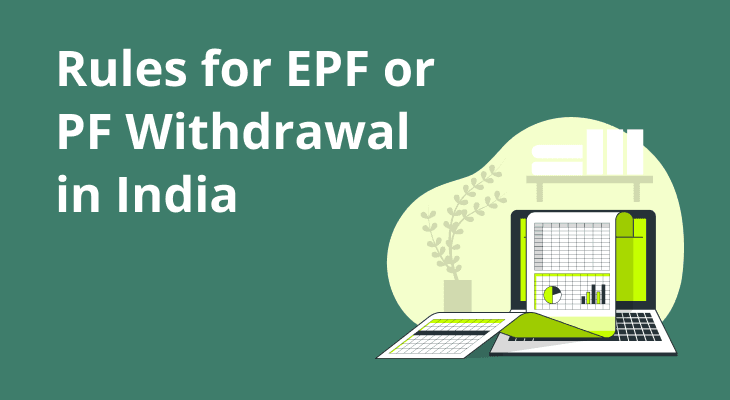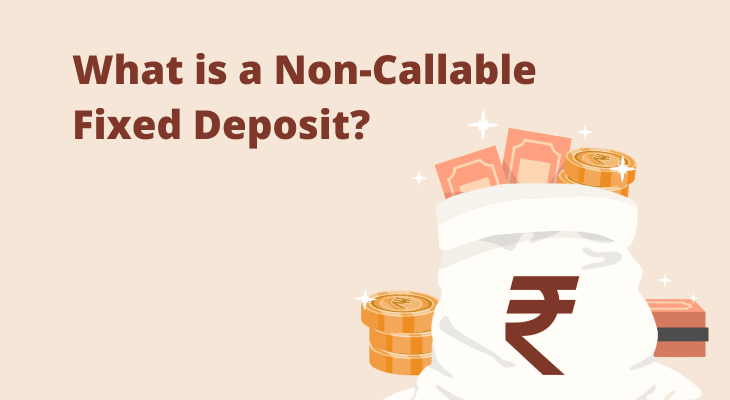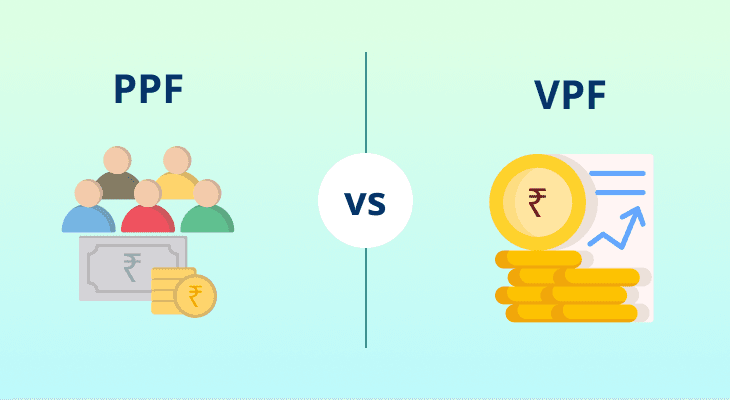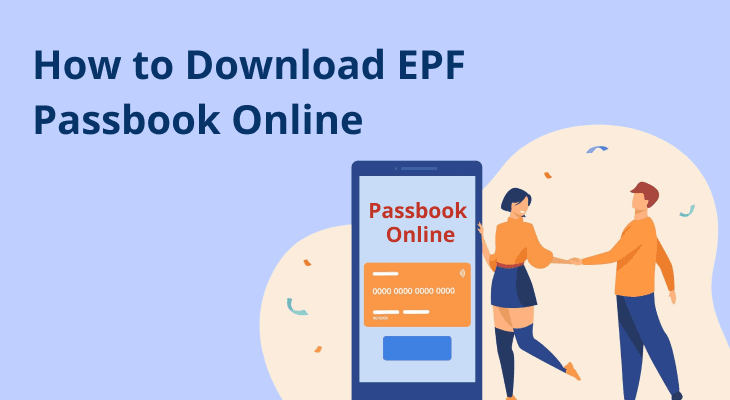
Table of content
- Introduction
- Eligibility criteria for EPF withdrawal
- Full EPF withdrawal
- Partial EPF withdrawal before retirement
- EPF withdrawal rules in India
- EPF withdrawal rules 2025
- Different scenarios for EPF amount withdrawal
- Documents required for EPF withdrawal
- Common mistakes to avoid during EPF withdrawal
- Conclusion
What are the Rules for EPF or PF Withdrawal in India?
Introduction
The Employees’ Provident Fund (EPF) is a long-term savings scheme designed for salaried individuals in India. Under this scheme, both the employer and employee contribute 12% of the employee’s basic salary each month. The contributions grow with a fixed rate of interest. While the EPF is designed to provide you with financial support after retirement, the scheme also permits partial withdrawals under specific conditions. Let’s explore when and how you can make an EPF withdrawal from your account.
Eligibility criteria for EPF withdrawal
The EPF allows both full and partial withdrawals, depending on the reason and the number of years you have contributed to the fund. Below is a detailed breakdown of the EPF eligibility criteria for each withdrawal:
Full EPF withdrawal
You are eligible for a complete withdrawal of your EPF balance under the following circumstances:
- Retirement
- Unemployment
Partial EPF withdrawal before retirement
- You can withdraw up to 90% of your EPF balance, including interest, if you are 54 years or older and are within one year of retirement.
Additionally, you can withdraw partially in the case of the following events/reasons:
- Medical emergencies
- Home loan repayment
- House renovation
- Education
- Purchase of land or house construction
- Marriage expenses
EPF withdrawal rules in India
You must follow the rules mentioned below when withdrawing from your EPF:
- You can make a complete EPF withdrawal if you retire or remain unemployed for two consecutive months or more.
- Partial EPF withdrawals are allowed before retirement for specific purposes such as medical needs, marriage, education, home purchase, home loan repayment, and house renovation.
- If you are at least 54 years old and within one year of retirement, you can withdraw up to 90% of your EPF balance, including interest
- You can withdraw EPF for medical purposes without any minimum years of service. The maximum limit is up to six times your monthly basic pay, or your total contribution with interest, whichever is lower. This is applicable for the treatment of yourself, your spouse, your children, or your parents.
- EPF withdrawals for education are allowed after seven years of service. You can withdraw up to 50% of your contribution to fund post-matriculation education for yourself or your children.
- If you want to buy land, you can withdraw up to 24 times your monthly basic salary plus Dearness Allowance (DA). For house construction, the limit increases to 36 times. However, you must have completed five years of service, and the withdrawal cannot exceed the actual cost of the land or house.
- For home loan repayment, you can withdraw the lesser of 36 times your monthly basic pay plus DA, the total EPF corpus including interest, or the outstanding loan principal and interest. This is allowed after 10 years of service.
- You can withdraw from your EPF for marriage purposes. This is permitted for yourself, your child, or your sibling. You can withdraw up to 50% of your own EPF contribution if you have completed at least seven years of service.
- You can withdraw for house renovation after completing five years of service. The limit is the lowest of 12 times your monthly basic pay plus DA, your own contribution with interest, or the total cost of renovation. The house must be owned by you or jointly with your spouse, and this withdrawal can be made twice. Once after five years and again after 10 years of the house’s completion.
EPF withdrawal rules 2025
The Government of India has proposed new EPF withdrawal provisions under the EPF 3.0 initiative for 2025. The new provisions will allow EPF subscribers to withdraw funds directly through Automated Teller Machines (ATMs). The facility is likely to be rolled out by mid-2025 and aims to make redemptions faster, simpler, and more accessible for subscribers.
Different scenarios for EPF amount withdrawal
Step-by-step process for EPF withdrawal
If you are looking to withdraw funds from your EPF account, here’s how you can do it through the EPFO portal:
- Log in to the EPFO Portal: Visit the official EPFO portal and log in using your Universal Account Number (UAN) and password.
- Access the online services section: Go to the Online Services tab in the top menu and click on ‘Claim (Form-31, 19 & 10C)’ from the dropdown.
- Verify bank account details: Enter the bank account number linked to your EPF account and click Verify.
- Proceed to claim: Confirm your identity by clicking Yes, and then select Proceed for Online Claim.
- Choose withdrawal type: In the ‘I Want to Apply For’ section, select the appropriate option based on your reason for withdrawal.
- Fill the withdrawal form: Select the ‘PF Advance (Form 31)’ if you are opting for a partial withdrawal. If prompted, mention the reason for withdrawal and upload any necessary supporting documents.
- Submit and wait for approval: Your application will be reviewed, and the EPF amount will be credited directly to your bank account.
Documents required for EPF withdrawal
You need the following documents for the withdrawal of your provident fund:
- UAN
- Bank account details
- Identity proof
- Address proof
- Cancelled cheque with IFSC code and account number
Common mistakes to avoid during EPF withdrawal
Here are some common mistakes to avoid during EPF withdrawal:
- Mismatch in personal details: Any discrepancy between your name, date of birth, or other personal information as listed in your EPF records can cause delays or rejection of your withdrawal request. So, you must ensure that all personal details on the EPFO portal are correct and up to date.
- Incomplete KYC records: Your Know Your Customer/Client (KYC) records must be complete and up to date. If your KYC details are missing or incorrect, the EPF withdrawal application may be rejected.
- UAN not activated or updated: If your UAN has not been activated or updated with your current employment details, you will not be able to process the withdrawal. Make sure your UAN is active, and all employment details are accurate.
- Incorrect bank account details: Incorrect bank details, such as the bank account number or IFSC code, can lead to rejections. Make sure to check that your bank account details are accurate.
- Mismatch in ID and address proofs: The identity and address proofs you submit must match the details on record with the EPFO. If there is a discrepancy between the details on your ID proofs, such as an Aadhaar or passport and what is in the EPFO records, it can lead to delays or even rejections.
Conclusion
Understanding the EPF withdrawal rules is crucial for managing your funds effectively and making a comprehensive financial plan. Without this knowledge, you may assume that your EPF balance will be readily available when needed, only to realise that it is not as accessible as you thought. Moreover, since these rules are subject to change, staying informed and regularly updating yourself on any modifications is important. This way, you can avoid potential issues and ensure that you are prepared when the time comes to make a withdrawal.


